Theoretical Analysis on the Effectiveness of Pipe Roofs in Shallow Tunnels
Abstract
:1. Introduction
2. Establishment of a Pipe Roof Analysis Model
2.1. The Composition and Effects of the Pipe Roof
2.2. The Pressure of the Surrounding Rock Acting on the Pipe Roof
2.3. The Force and Deformation of the Steel Pipe of the Pipe Roof
3. Evaluation of the Effect of Pre-Support of the Pipe Roof
3.1. The Index of the Pipe Roof Pre-Support Effect Evaluation
3.2. Evaluation Index Calculation Method
4. Case Calculation and Verification
5. Discussion
6. Conclusions
- (1)
- In this paper, a shallowly buried soft surrounding-rock tunnel is taken as the research object, and the mechanical calculation model of surrounding rock pressure on each steel pipe in the pipe shed is established by considering the application time of the pipe sheds. The distribution characteristics of the surrounding rock pressure, increasing gradually from the vault to the arch foot in the cross section of the tunnel, are discussed through a numerical example.
- (2)
- Based on the stress and deformation calculation model of pipe sheds shallowly buried in a soft surrounding rock tunnel and the Peck formula, a theoretical analysis model of pipe sheds’ advanced protection effect was constructed, and a theoretical analysis method of pipe sheds’ advanced protection effect was proposed, which took the stratum loss rate, settlement trough width, and maximum surface settlement as evaluation indexes.
- (3)
- The theoretical calculations were demonstrated to be reasonable and accurate based on a comparative analysis with field-measured data of a pipe roof at the entrance of the Huapiling tunnel. On the basis of these results, we obtained the longitudinal distribution of surrounding rock deformation and surface settlement along the tunnel by theoretically calculating the control effect of surrounding rock deformation and surface settlement after completing the excavation and pre-support protection section of the Huapiling tunnel entrance.
- (4)
- Guided by the effects of pre-support, the influence of the main design, and the construction parameters for the steel pipe diameter, we analyzed the impact of circumferential spacing and excavation footage length on the pre-support effects of the pipe roof. According to the analysis, the following conclusions can be drawn. The smaller the circumferential spacing and the smaller the excavation footage length, the better the ability of the pipe roof to control the surrounding rock deformation; when the pipe diameter is small, increasing the pipe diameter can effectively improve the ability of the pipe roof to control formation deformation, and when the pipe diameter is large, the effect on controlling formation deformation by increasing the pipe diameter will no longer be obvious.
- (5)
- In this paper, the pipe sheds of the shallowly buried soft surrounding-rock tunnel are taken as the research object, and the theoretical analysis method for pipe sheds’ pre-support effect and other related conclusions are put forward, which can provide a certain reference value for the design and construction of pipe sheds of similar projects.
Author Contributions
Funding
Institutional Review Board Statement
Informed Consent Statement
Conflicts of Interest
References
- Zhang, Z.; Li, H.; Liu, H.; Li, G.; Shi, X. Load transferring mechanism of pipe umbrella support in shallow-buried tunnels. Tunn. Undergr. Space Technol. 2014, 43, 213–221. [Google Scholar] [CrossRef]
- Yang, S.; Wang, M.; Du, J.; Guo, Y.; Geng, Y.; Li, T. Research of jacking force of densely arranged pipe jacks process in pipe-roof pre-construction method. Tunn. Undergr. Space Technol. 2020, 97, 103277. [Google Scholar] [CrossRef]
- Zarei, H.; Moarefvand, P.; Salmi, E.F. Numerical modeling of umbrella arch technique to reduce tunnelling induced ground movements. Environ. Earth Sci. 2019, 78, 291. [Google Scholar] [CrossRef]
- Luo, Y.; Chen, J.; Liu, B.; Chen, L.; Xie, J. Analysis of Pipe-Roof in Tunnel Exiting Portal by the Foundation Elastic Model. Math. Probl. Eng. 2017, 2017, 9387628. [Google Scholar] [CrossRef]
- Shi, Y.; Yang, J.; Wang, S. Sub-horizontal reinforcement of weathered granite before tunneling beneath a spillway. Int. J. Rock Mech. Min. Sci. 2014, 72, 283–293. [Google Scholar] [CrossRef]
- Zheng, J.J.; Zhang, R.J.; Yang, Q.N. Mechanical mechanism of piperoofs with variable coefficient of subgrade reaction in shallow tunnels. Chin. J. Geotech. Eng. 2009, 31, 1165–1171. [Google Scholar]
- Ding, Z.; Fu, J.; Liu, X.; Huang, J. Study of mechanical model for pipe roof in talus tunnel considering spatial effect. J. China Railw. Soc. 2018, 40, 121–127. [Google Scholar]
- Li, Z. Study on Mechanism and Design Method of Pipe Roof in Shallow Excavation Tunnel; Beijing University of Technology: Beijing, China, 2012. [Google Scholar]
- Song, Z.; Tian, X.; Zhou, G.; Li, W. Theoretical Analysis of Mechanical Behavior of Advanced Pre-support of Pipe-roof in Tunnel. China J. Highw. Transp. 2020, 33, 89–98. [Google Scholar]
- Zhou, S. Principles of pipe roof applied to shallow-buried tunnels in soft ground. Chin. J. Rock Mech. Eng. 2005, 14, 2565–2570. [Google Scholar]
- Xu, X.; Song, Z.; Li, H.; Tian, X.; Zhou, G. Unification of the Mechanical Model and Parameter Analysis of the Elastic Foundation Beam of Pipe-Roof. Front. Earth Sci. 2022, 10, 803670. [Google Scholar] [CrossRef]
- Hisatake, M.; Ohno, S. Effects of pipe roof supports and the excavation method on the displacements above a tunnel face. Tunn. Undergr. Space Technol. 2008, 23, 120–127. [Google Scholar] [CrossRef]
- Guo, X.; Zhang, H.R.; Meng, J.; Zhang, X.; Wang, M.; Zhu, Y. Model test to earth pressure distribution on pipe roof of tunnels as pre-supporting system in weak surrounding rock. Chin. J. Rock Mech. Eng. 2016, 35, 1214–1224. [Google Scholar]
- Li, H.Y.; Zhang, Z.Q.; Wang, Z.J. Similarity model test study of pre-reinforcement measures of shallow tunnel with large cross-section. Rock Soil Mech. 2012, 33, 133–138. [Google Scholar]
- Morovatdar, A.; Palassi, M.; Ashtiani, R.S. Effect of pipe characteristics in umbrella arch method on controlling tunneling-induced settlements in soft grounds. J. Rock Mech. Geotech. Eng. 2020, 12, 984–1000. [Google Scholar] [CrossRef]
- Bagherzadeh, P.; Goshtasbi, K.; Kashef, M. Umbrella arch method performance, structural behavior and design elements utilizing in collapsing zones. Environ. Earth Sci. 2020, 79, 521. [Google Scholar] [CrossRef]
- Xiao, J.Z.; Dai, F.C.; Wei, Y.Q.; Xing, Y.C.; Cai, H.; Xu, C. Analysis of mechanical behavior in a pipe roof during excavation of a shallow bias tunnel in loose deposits. Environ. Earth Sci. 2016, 75, 293. [Google Scholar] [CrossRef]
- Wang, W.; Lei, X.T.; Li, D.W. Prediction method for stress and deformation of pipe roofs and its engineering application. Chin. J. Geotech. Eng. 2022, 44, 325–359. [Google Scholar]
- Peck, R. Deep Excavation and Tunneling in Soft Ground. In Proceedings of the 7th International Conference Soil Mechanics and Foundation Engineering, Mexico City, Mexico, 21 August 1969; Sociedad Mexicana de Mecánica: Mexico City, Mexico, 1969; pp. 225–290. [Google Scholar]
- Osman, A.; Bolton, M.; Mair, R. Predicting 2D ground movements around tunnels in undrained clay. Géotechnique 2006, 56, 597–604. [Google Scholar] [CrossRef]
- Duan, S.K.; Huang, L.; Bao, Z.; Shen, P. Application of modified Peck formula in surface subsidence prediction of Changsha subway tunnel construction. J. Nat. Disasters 2013, 24, 164–169. [Google Scholar]
- Zhu, C.H. Control of surface settlement by considering shield tunneling technology. KSCE J. Civ. Eng. 2017, 21, 2896–2907. [Google Scholar] [CrossRef]
- Wang, D.; Yuan, J.; Li, J.; Peng, X.; Wu, Z.; Liu, W.; Wang, H. Deformation prediction of pipe roof in shallow soft portal section of tunnels considering construction feature. Chin. J. Rock Mech. Eng. 2017, 36, 716–724. [Google Scholar]
- Yu, L.; Yang, N.; Lyu, C.; Wang, M.; Tong, J. Study on Equivalent Elastic Modulus of Steel Reinforced Concrete Frame. Railw. Eng. 2018, 58, 42–45. [Google Scholar]
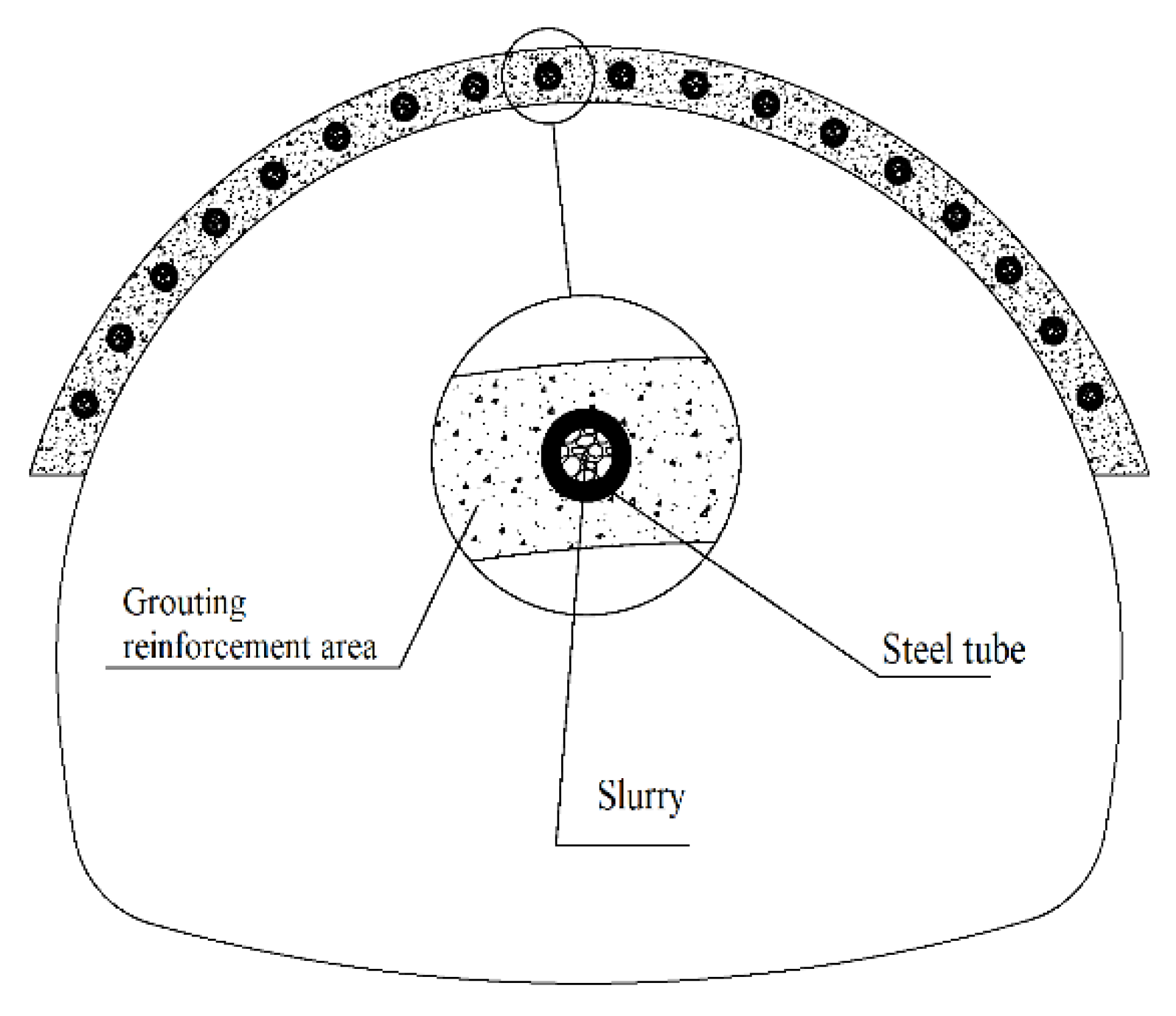

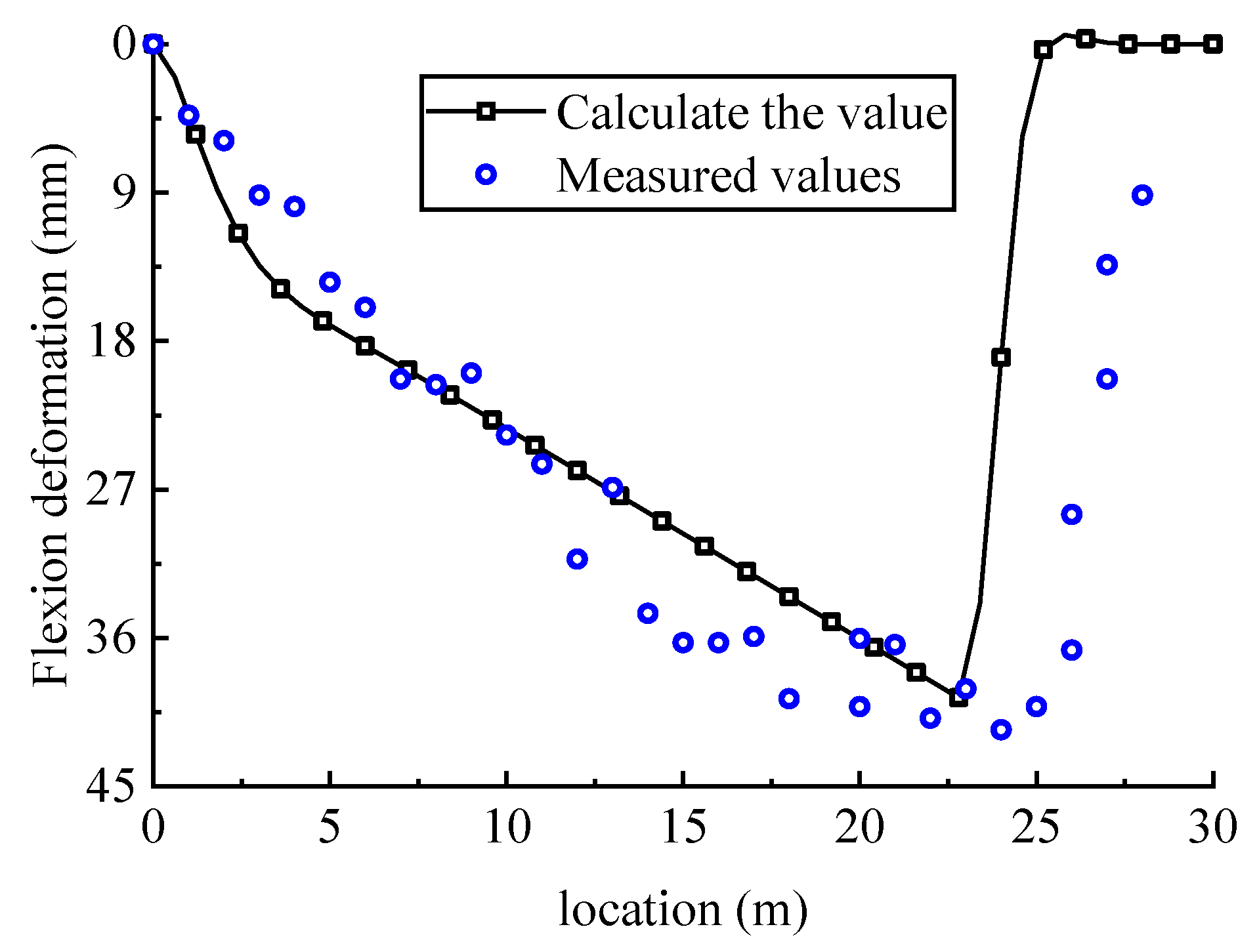
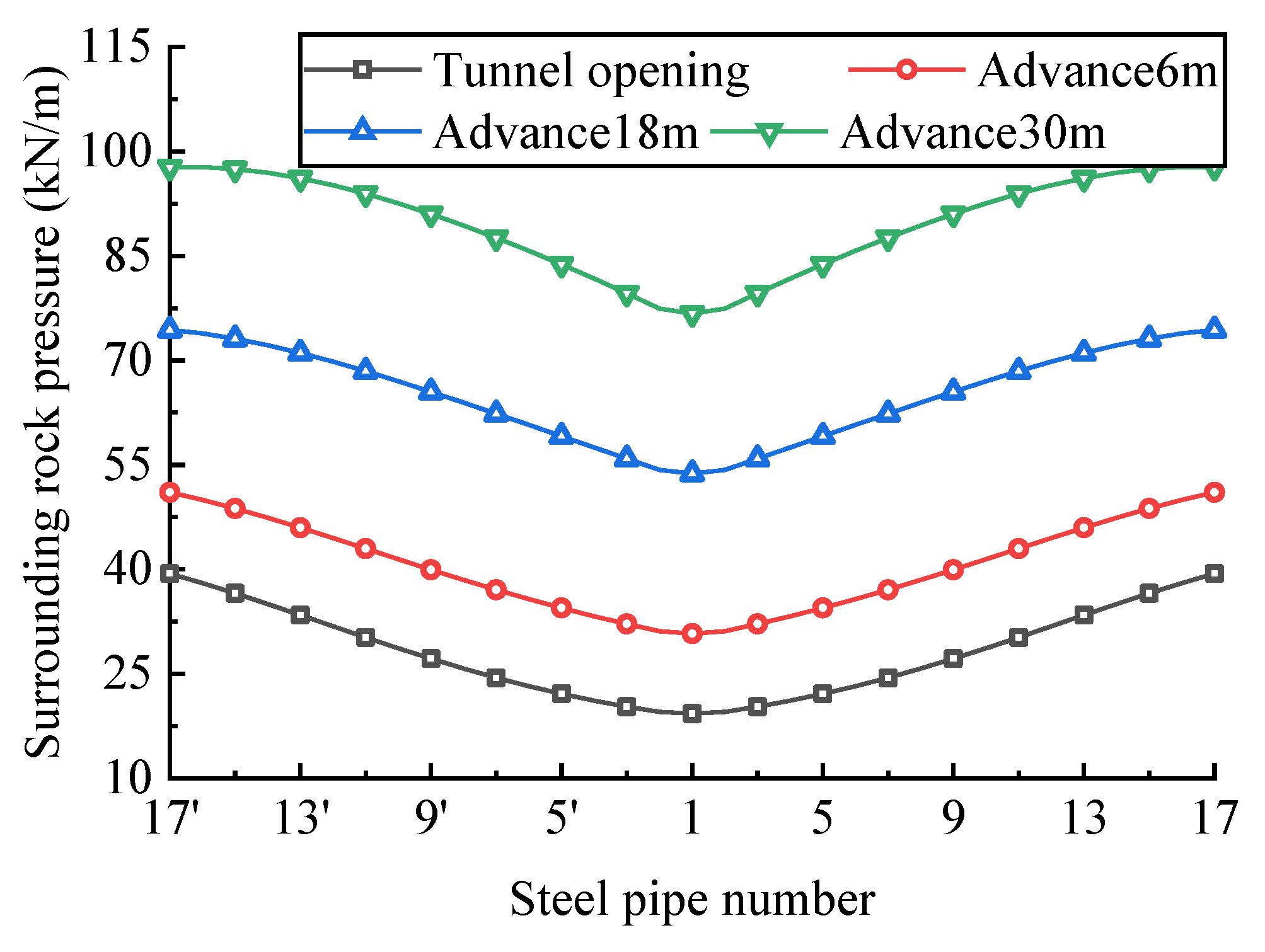
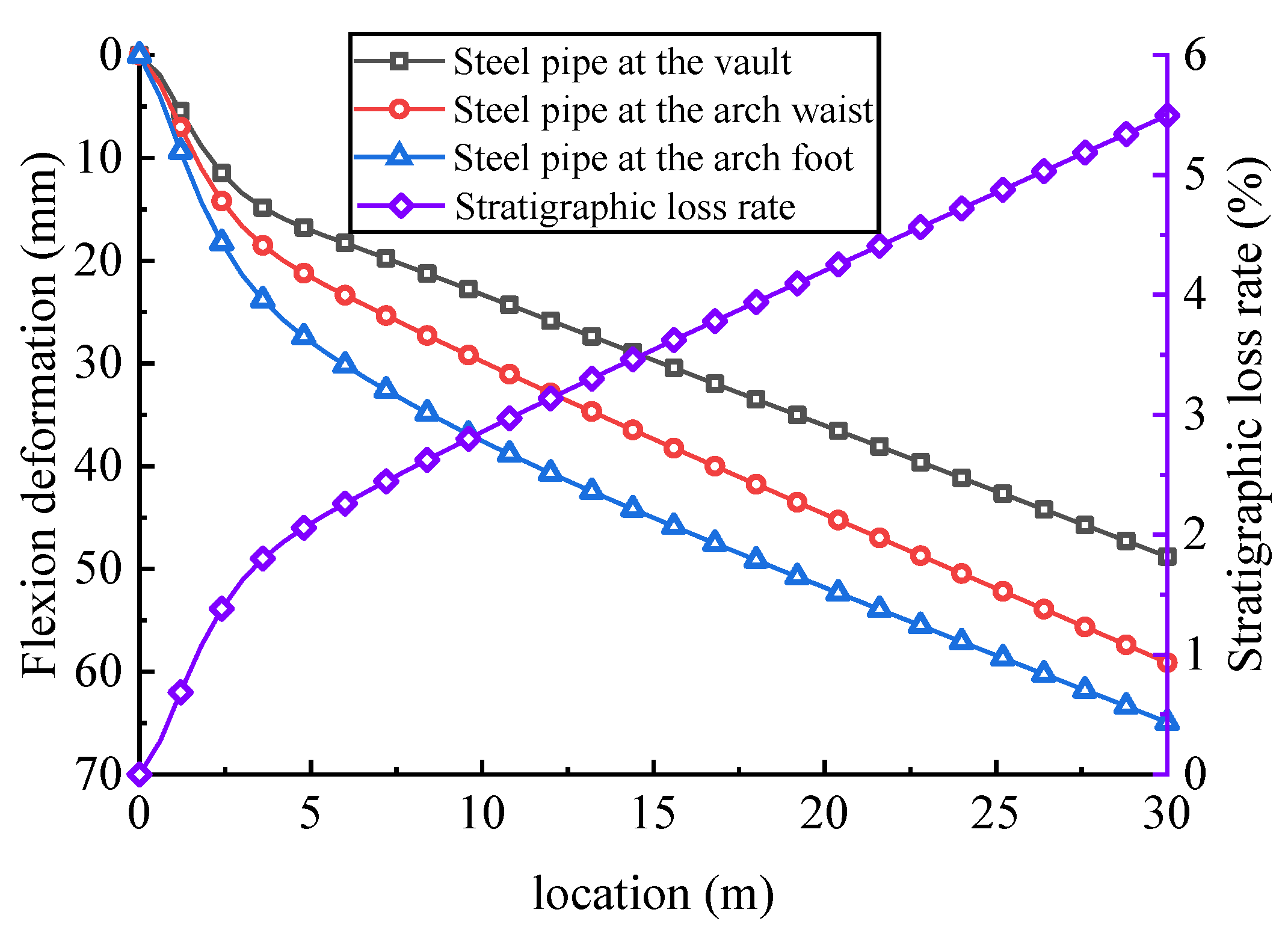
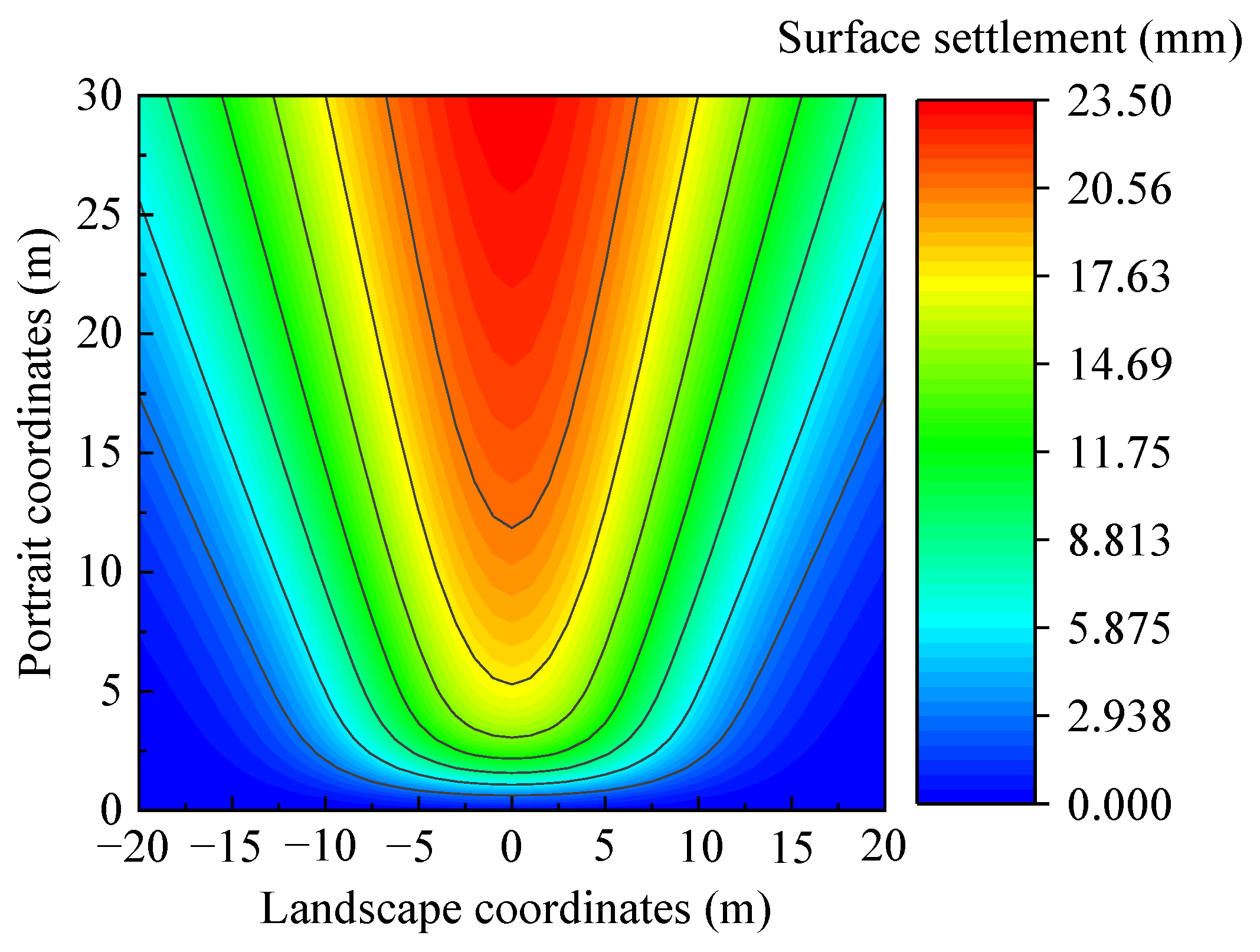
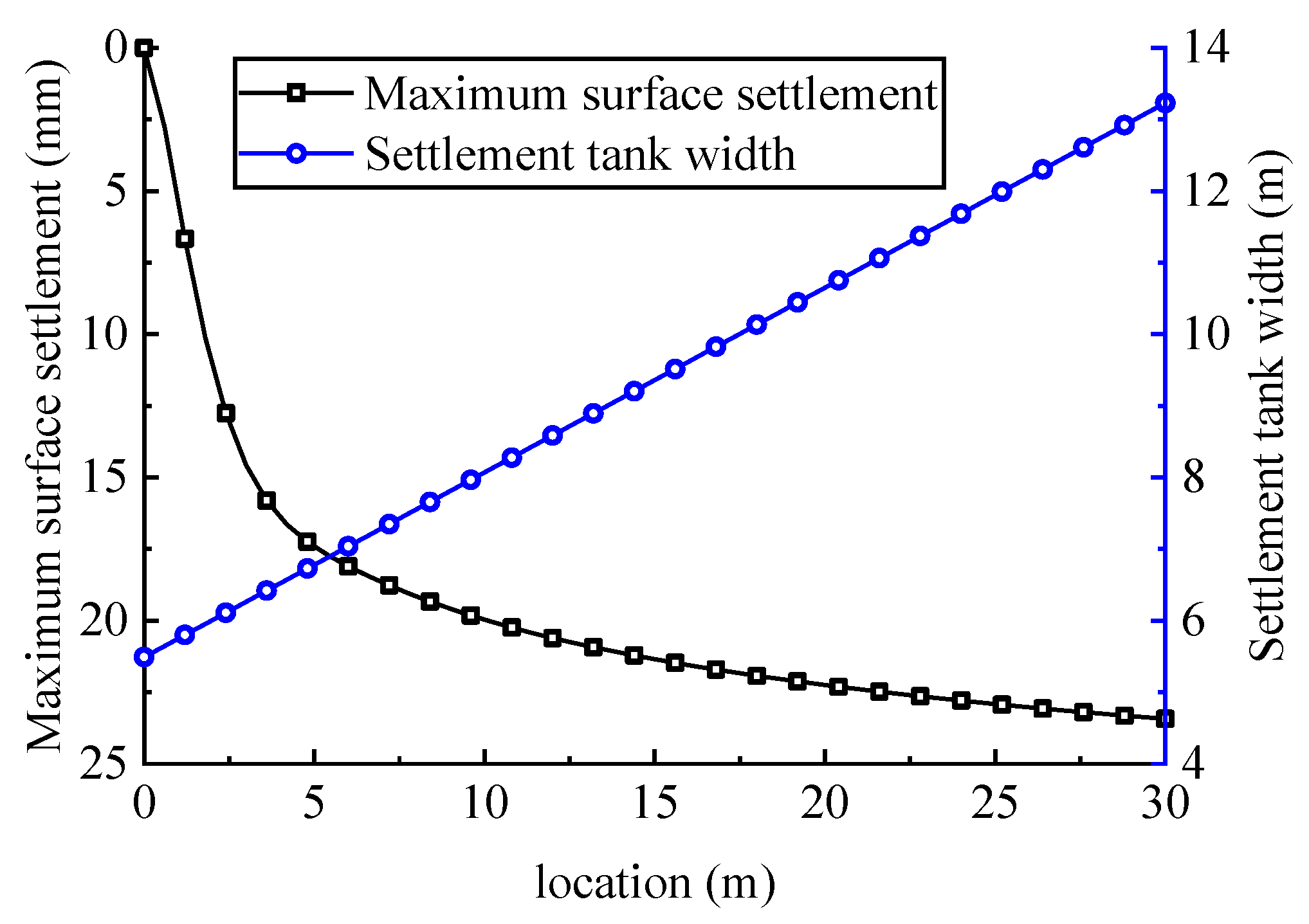
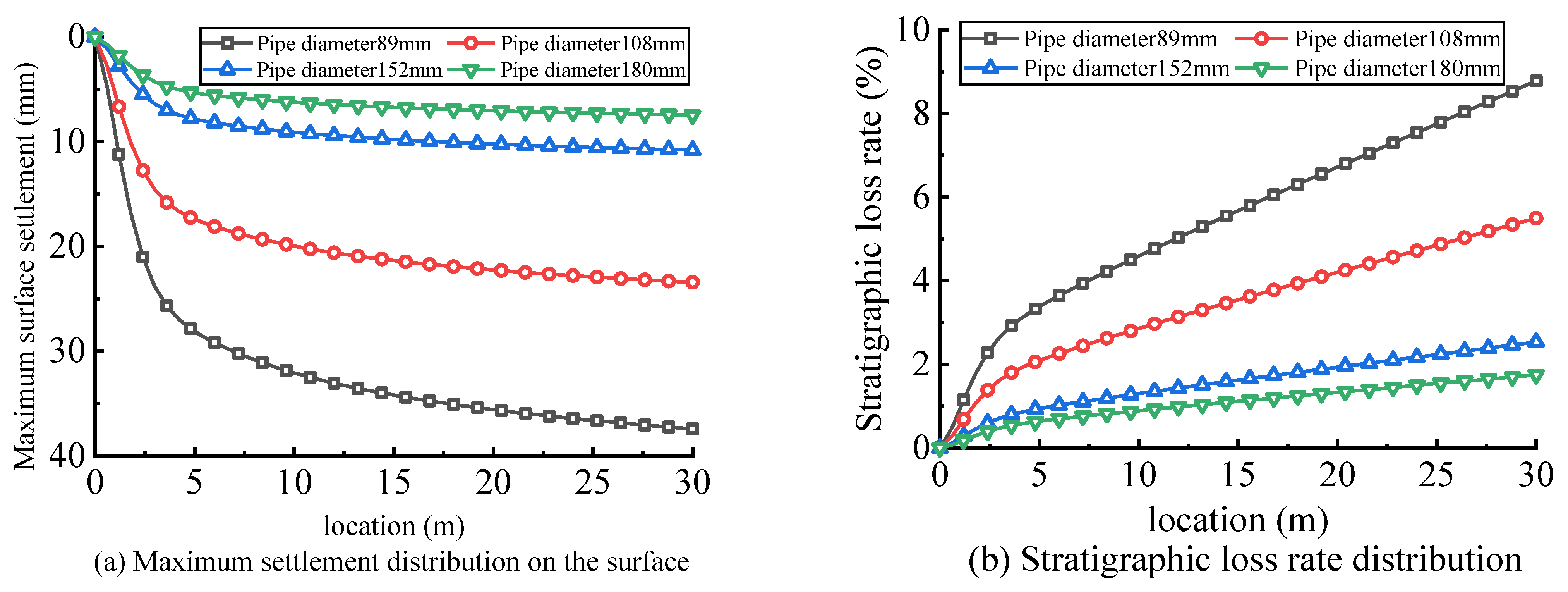
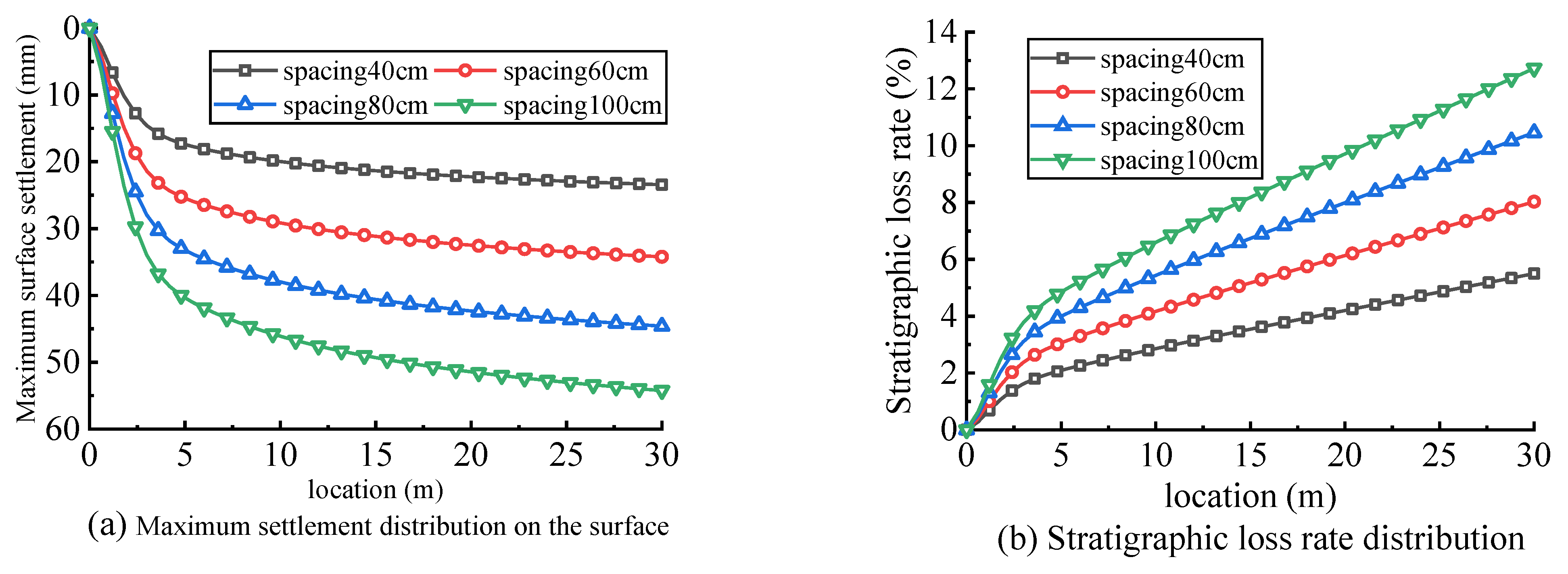
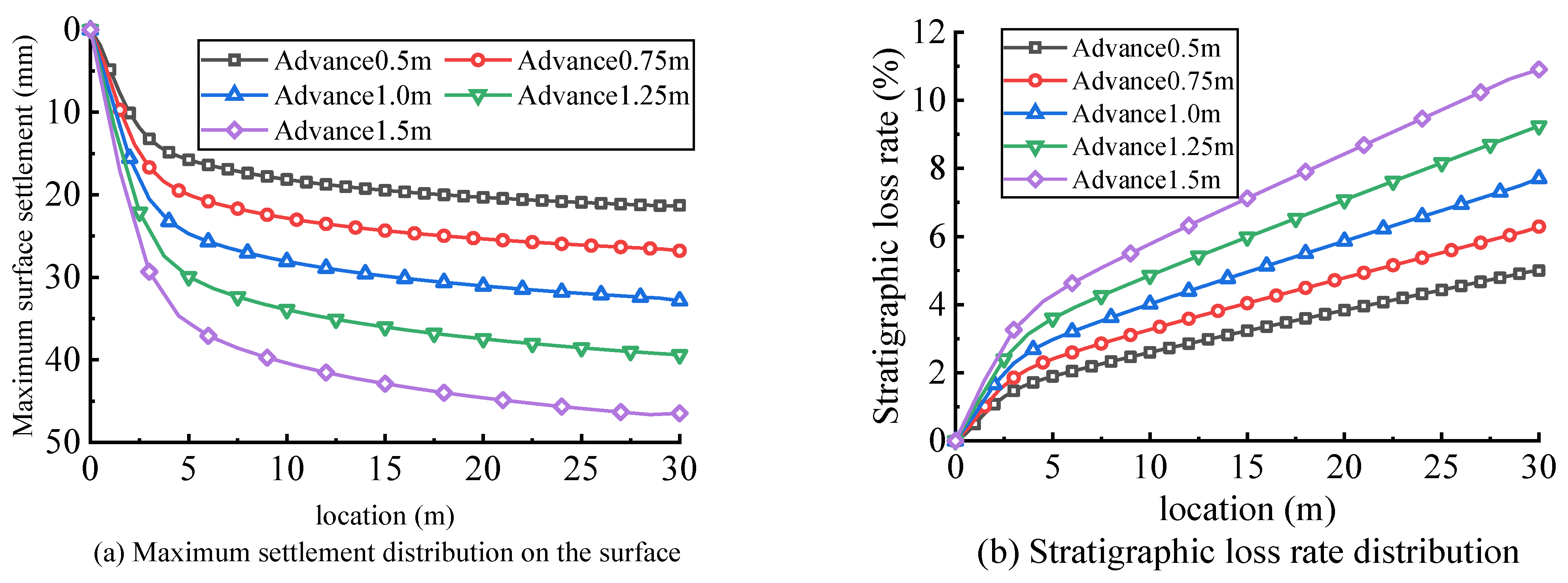
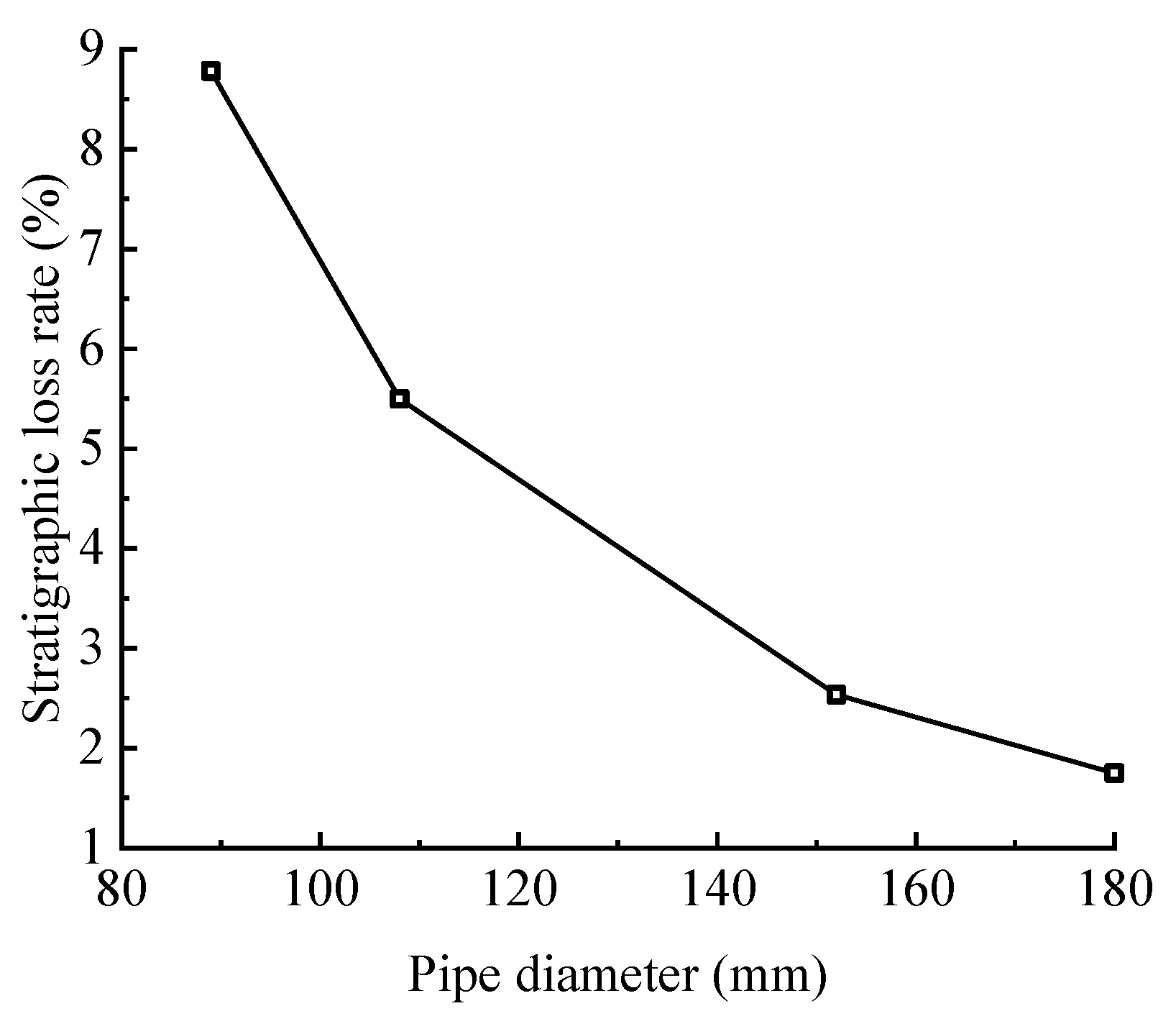
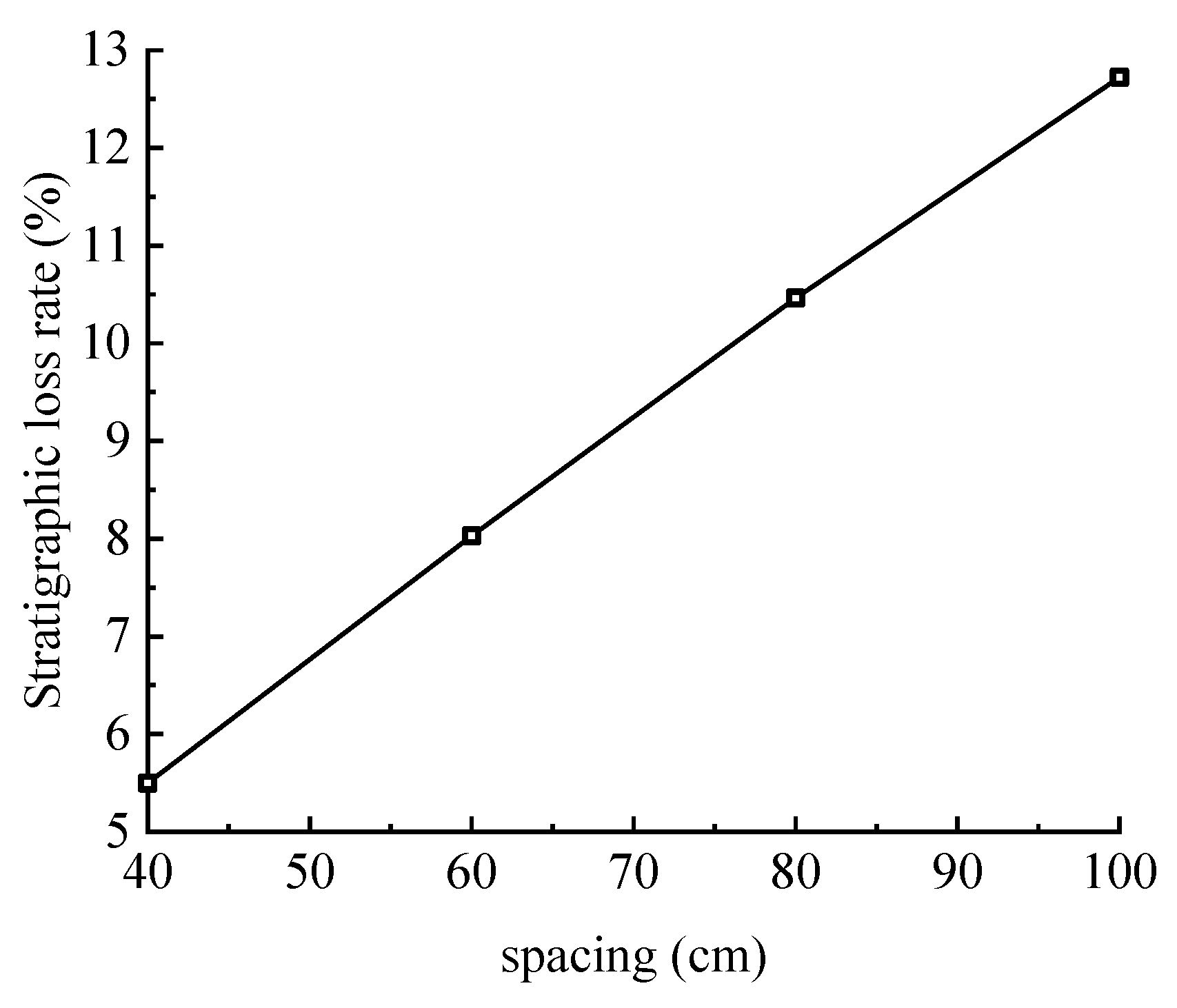
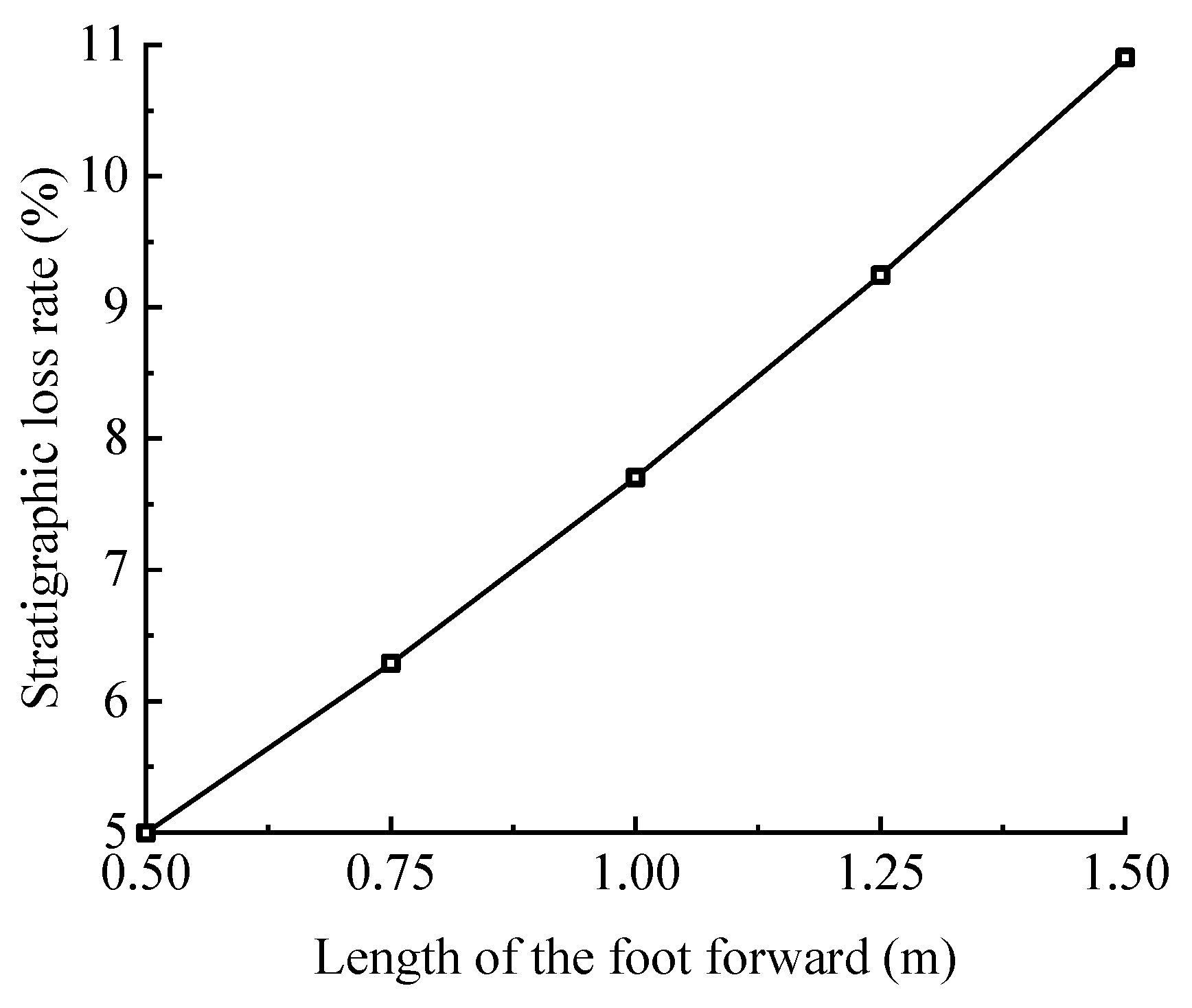
| Parameter | Base Bed Coefficient (kN/m3) | Foundation Shear Modulus (kN/m) | Unit Weight (kN/m3) |
|---|---|---|---|
| Value | 28,000 | 2800 | 17.5 |
| Pipe Diameter (mm) | 89 | 108 | 152 | 180 |
| Equivalent Moment of Inertia (m4) | 3.08 × 10−6 | 6.68 × 10−6 | 2.6 × 10−5 | 5.15 × 10−5 |
| Equivalent Modulus of Elasticity (kPa) | 9.24 × 107 | 7.89 × 107 | 5.89 × 107 | 5.07 × 107 |
Publisher’s Note: MDPI stays neutral with regard to jurisdictional claims in published maps and institutional affiliations. |
© 2022 by the authors. Licensee MDPI, Basel, Switzerland. This article is an open access article distributed under the terms and conditions of the Creative Commons Attribution (CC BY) license (https://creativecommons.org/licenses/by/4.0/).
Share and Cite
Li, Y.; Wang, W.; Yan, S.; Du, J. Theoretical Analysis on the Effectiveness of Pipe Roofs in Shallow Tunnels. Appl. Sci. 2022, 12, 9106. https://doi.org/10.3390/app12189106
Li Y, Wang W, Yan S, Du J. Theoretical Analysis on the Effectiveness of Pipe Roofs in Shallow Tunnels. Applied Sciences. 2022; 12(18):9106. https://doi.org/10.3390/app12189106
Chicago/Turabian StyleLi, Yuxiang, Wen Wang, Songhong Yan, and Jiaxuan Du. 2022. "Theoretical Analysis on the Effectiveness of Pipe Roofs in Shallow Tunnels" Applied Sciences 12, no. 18: 9106. https://doi.org/10.3390/app12189106
APA StyleLi, Y., Wang, W., Yan, S., & Du, J. (2022). Theoretical Analysis on the Effectiveness of Pipe Roofs in Shallow Tunnels. Applied Sciences, 12(18), 9106. https://doi.org/10.3390/app12189106





